site search
online catalog
EARLY INDIAN WAR ALTERED BARRACKS OR CAMP SHOE
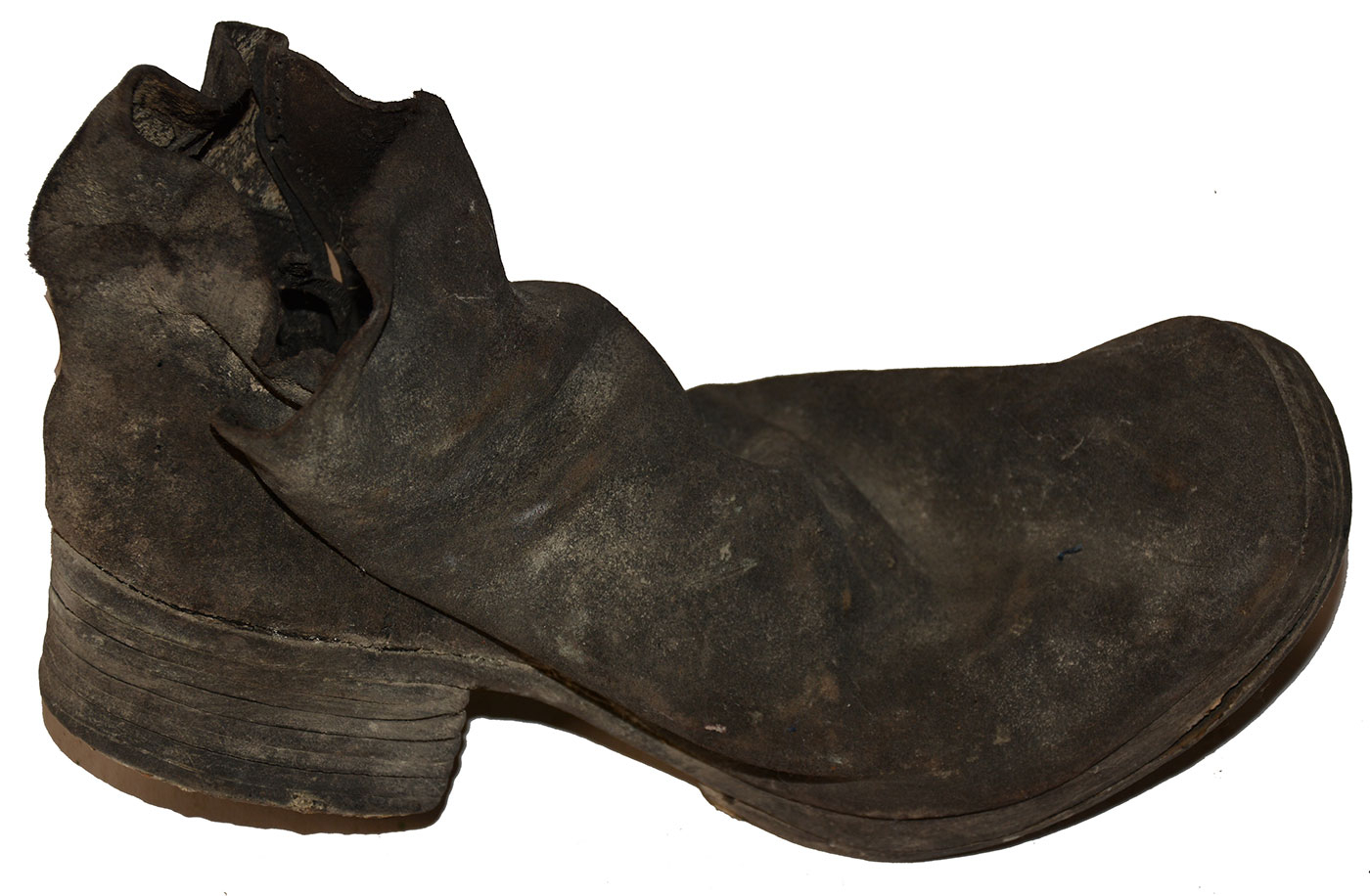
Hover to zoom

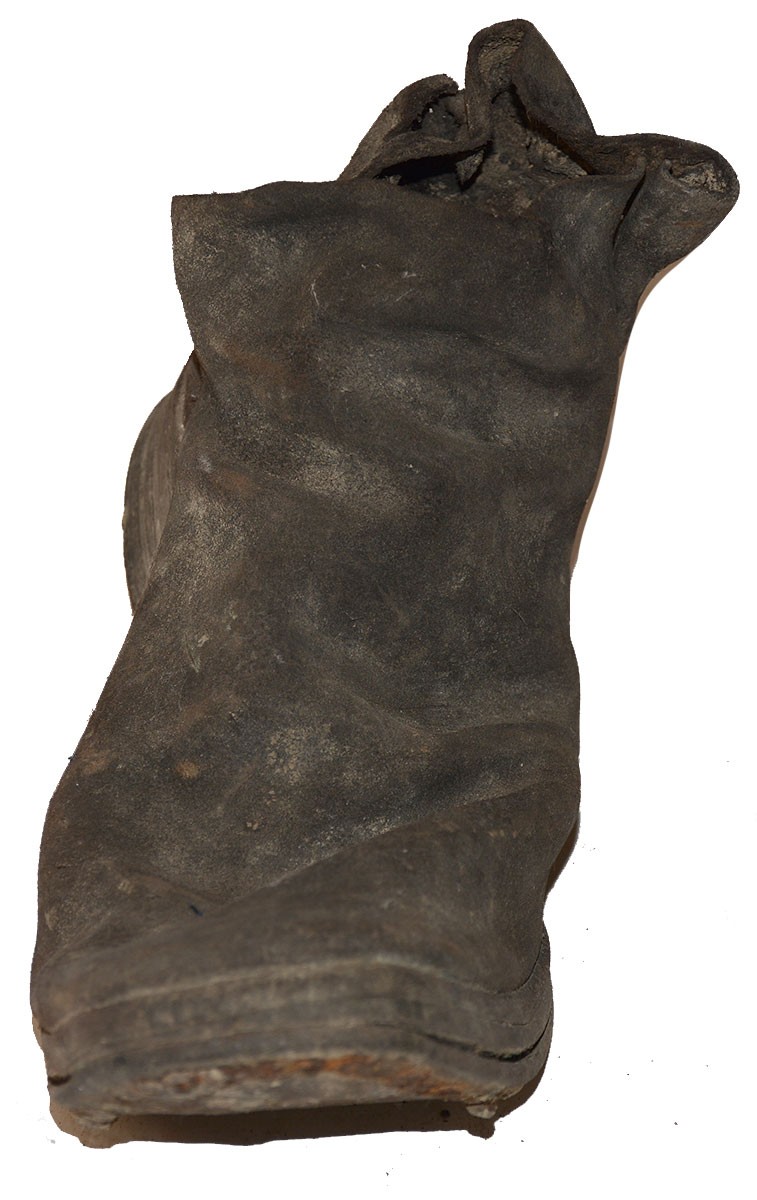
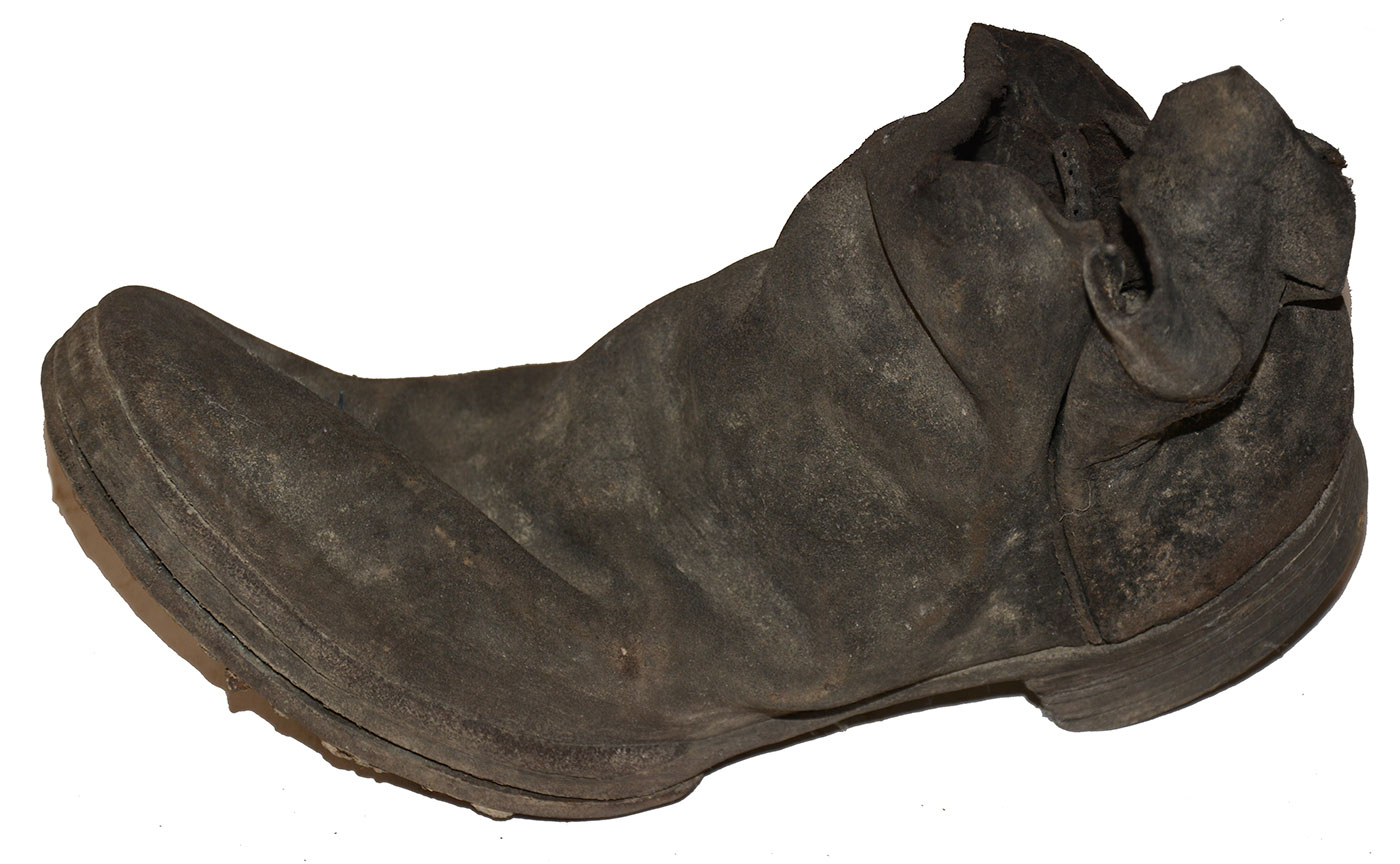
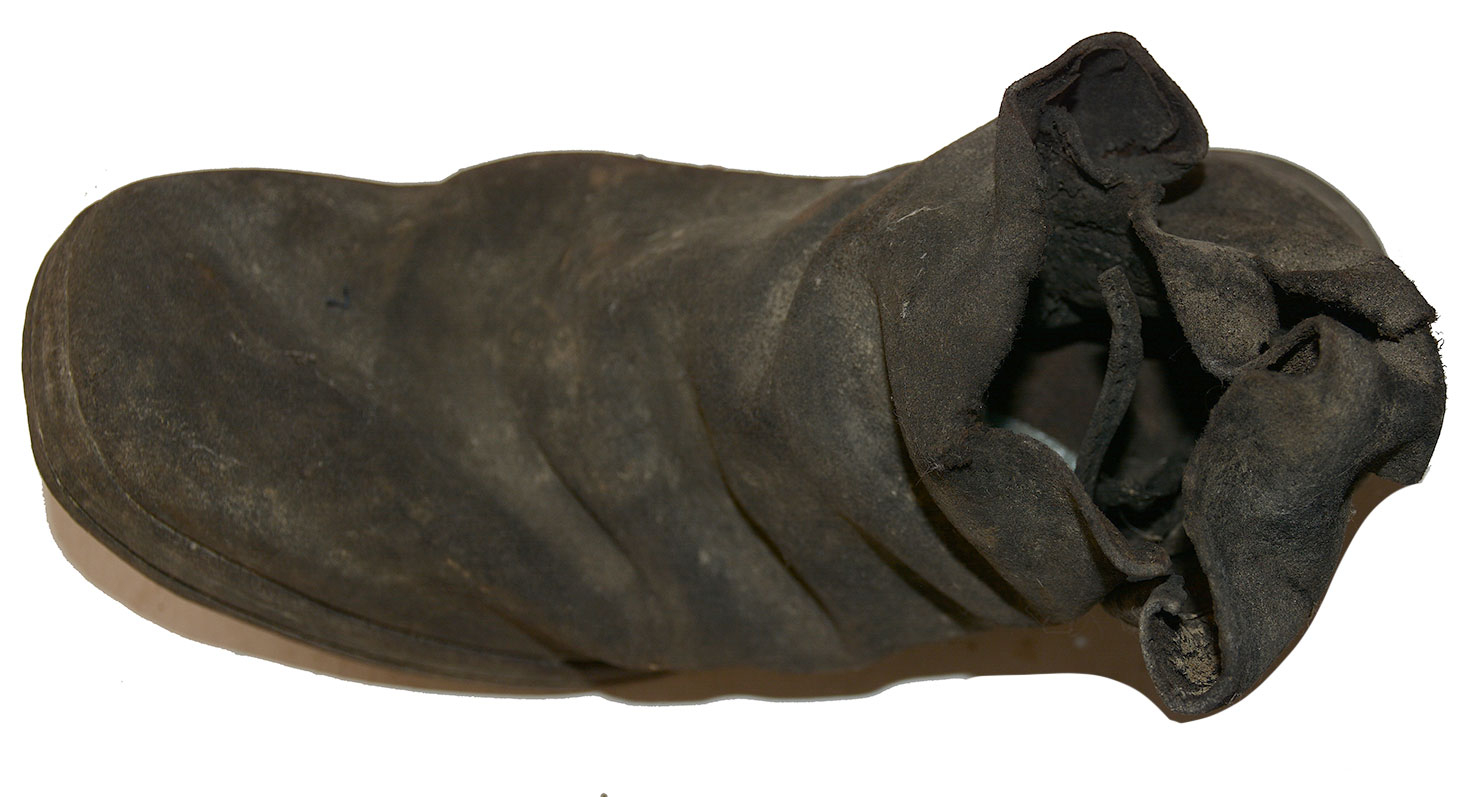
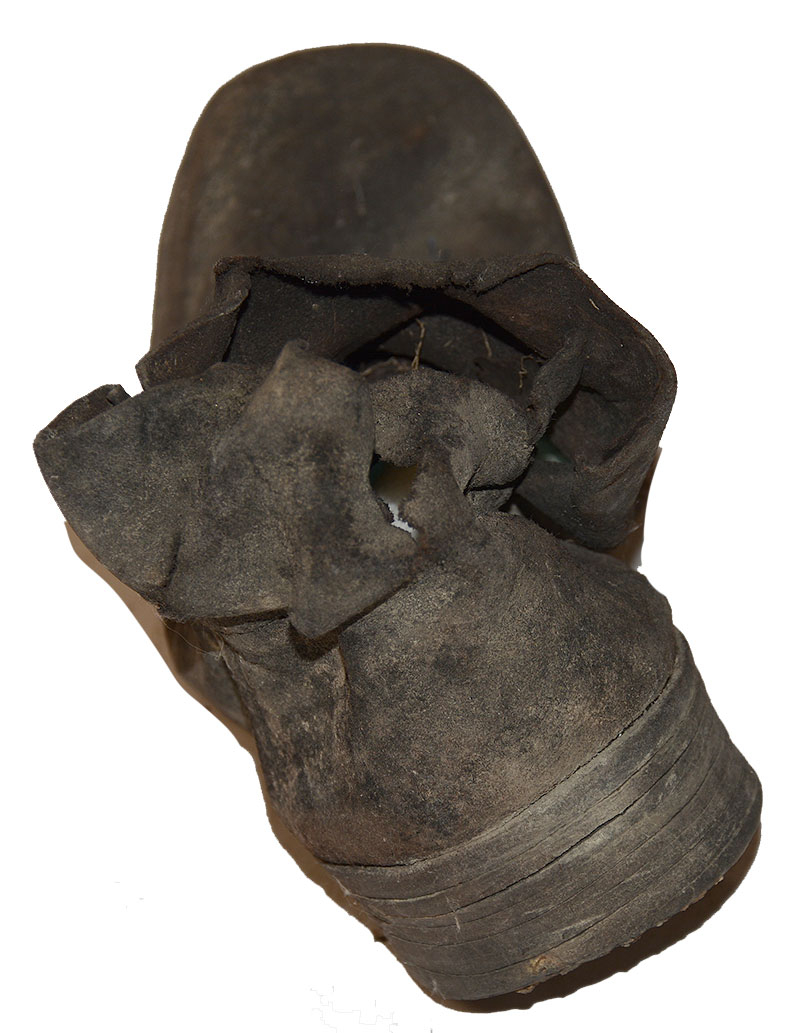
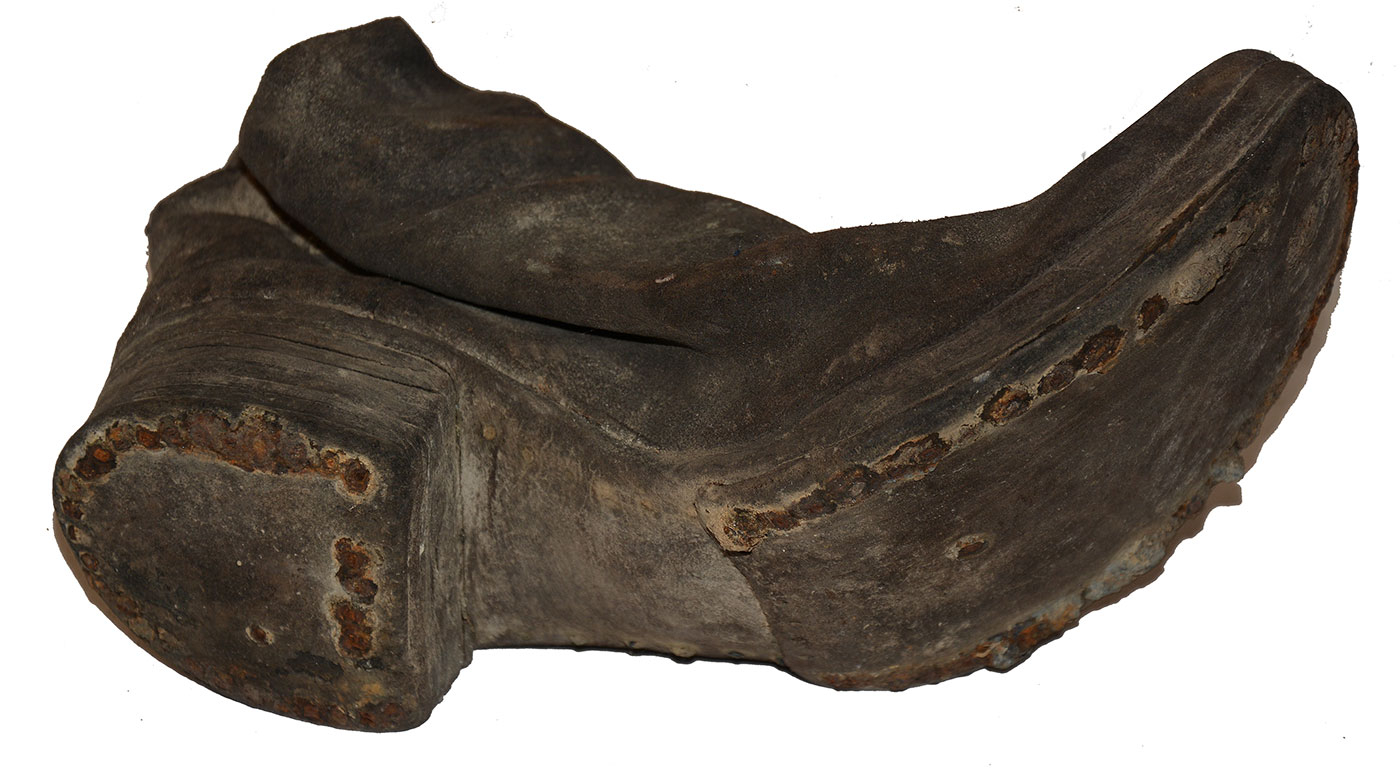
$395.00
Quantity Available: 1
Item Code: 1052-288
Shipping: Determined by Method & Location of buyer
To Order:
Call 717-334-0347,
Fax 717-334-5016, or E-mail
This is an unusual Indian War soldier’s camp or barracks shoe from Fort Pembina, ND, a small U.S. army post from 1870 to 1895. The heel portion of the quarters was cut away, either to salvage the leather or to create a mule style sandal for wear around the barracks. We have seen examples made by altering issue field shoes, but this seems to have been a camp or barracks shoe from the start and was made with rather narrow, contoured sole attached with a line of thin stitching, and fitted with a narrow, nailed, stacked heel. This is likely a commercially available shoe marketed to soldiers for more comfortable wear in garrison, camp or barracks, while on leave or on a pass for a hot night in town. They might or might not pass a casual inspection, but would be far more comfortable than a field shoe in any case. The army only got the idea such a shoe might be a good idea to issue somewhat late. See McChristian, Uniforms, Arms and Equipment- The US Army on the Western Frontier 1880-1892 for details on the later versions of the barracks shoe and issues regarding their adoption.
The leather is hard, stable, and can be handled. When the rear of the quarters was cut away it took the lace holes, but the two holes for it on the vamp are still there. The vamp itself was slit, likely for comfort, and a tear now extends to the sides from the bottom of that slit, but no leather is missing. The stitching is gone from the underside, wot there is gap between the inner and outer sole, but the sole shows no holes and the heel, made of five layers of leather is complete and in place, as are most of the nails, though showing corrosion.
This was excavated at in Fort Pembina, on private property and with the owner’s permission, in anaerobic conditions that have yielded cloth and leather in remarkable condition. (Think of the British Roman fort a Vindolanda, which has offered up two-thousand year-old leather sandals.) In this case the military fort was a U.S. Army Indian War post situated in the Red River Valley in North Dakota near the Canadian border, established in 1870 and in operation until 1895. Trading posts existed earlier in the area as part of the fur trade, and the first U.S. military post there was temporary- manned by a detachment of Minnesota troops in 1863-1864 following the 1862 Sioux uprising. In March 1870 a new fort was established south of the Pembina River and about 200 yards west of the Red River, completed by July and named in honor of Gen. George H. Thomas. The name was changed to Fort Pembina in September and the initial garrison consisted of two companies of the 20th US Infantry and excavations show that, as is typical of the early Indian Wars regular army, their uniforms and gear were a mix of Civil War surplus issue, private purchase material, and later army issue patterns and private purchases as time went on. Their main duty was to provide security for settlers worried about Sioux returning south from Canada, but the troops were more occupied with escorting boundary surveys along the Canadian border and preventing Fenian raids heading north into Canada.
The fort included enlistedmen’s barracks, officers’ quarters, guard house, ordnance storehouse, company kitchen, root house, laundress’s quarters, quarters for civilian employees, hospital and hospital servant’s house, a barn for the “hospital cow,” quartermaster and commissary offices and storehouse, stables, wagon shed, etc. The garrison reached peak strength in 1878 af 200, but the average was about 125 enlisted men and 8 officers. An October 1885 return listed 97 men, 2 field pieces, 1 mountain howitzer, 100 rifles, 19 pistols, 23 mules, and 9 wagons. By 1890 the post had just 23 men, and after an 1895 fire destroyed some 19 buildings it was decided to abandon the fort rather than rebuild, the last detachment left in September. The property was turned over to the Interior Department and later sold in 1902.
This is an interesting piece of army footwear, something rarely preserved by soldiers or treasured by their families. [sr] [ph:L]
~~~~~~~~~~~~~~~~~~~~~~~~~~~~~~~~~~~
THIS ITEM, AS WITH ALL OTHER ITEMS AVAILABLE ON OUR WEB SITE,
MAY BE PURCHASED THROUGH OUR LAYAWAY PROGRAM.
CLICK HERE FOR OUR POLICIES AND TERMS.
THANK YOU!
Inquire About EARLY INDIAN WAR ALTERED BARRACKS OR CAMP SHOE
Most Popular
Historical Firearms Stolen From The National Civil War Museum In Harrisburg, Pa »
Theft From Gravesite Of Gen. John Reynolds »
Selection Of Unframed Prints By Don Troiani »
Fine Condition Brass Infantry Bugle Insignia »
Large English Bowie Knife With Sheath 1870’S – 1880’S »
Imported (Clauberg) Us Model 1860 Light Cavalry Officer's Saber »
featured item
REMARKABLE SWORD IDENTIFIED TO GEORGE WILLIAM GORDON (1801-1877), US CONSUL TO BRAZIL (1840-46) AND SLAVE TRADE OPPONENT
A remarkable sword manufactured by W.H. Horstmann & Co., New York after the Model 1834 US Revenue Cutter/Marine sword. Neatly engraved on the reverse folding guard, “Geo. Wm. Gordon / United States Consul”. Born on February 8, 1801 in Exeter,… (870-60). Learn More »


